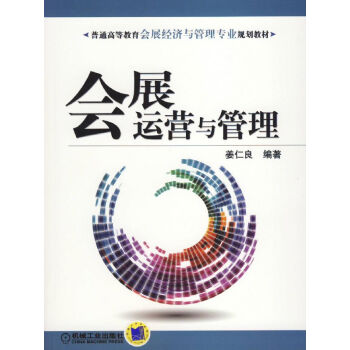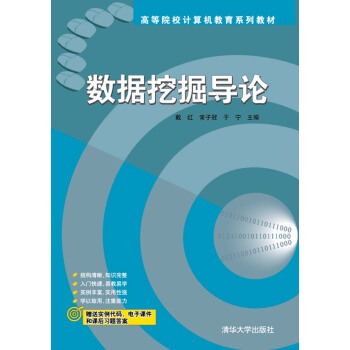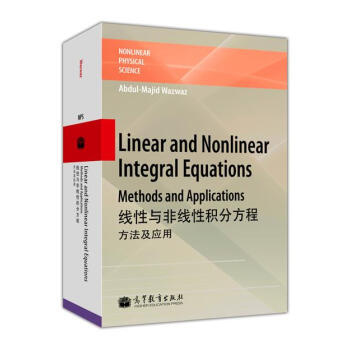

具體描述
編輯推薦
關鍵詞:綫性與非綫性Volterra方程,綫性與非綫性Fredholm方程,綫性與非綫性奇異方程,積分方程組。Nonlinear Physical Science focuses on the recent a dvances of fundamental theories and principles, analytical and symbolic approaches, as well as computational techniques in nonlinear physical science and nonlinear mathematics with engineering applications.內容簡介
《綫性與非綫性積分方程:方法及應用》是一本同時介紹綫性和非綫性積分方程的教材,分成兩部分,各部分自成體係。第一部分主要對第一類、第二類綫性積分方程進行瞭係統、深入的分析並提供各種解法;第二部分主要講述非綫性積分方程求解及其應用,針對不適定fredholm問題、分歧點和奇異點等問題進行瞭係統的分析,並提供易於理解的處理方法。《綫性與非綫性積分方程:方法及應用》通過大量的例子講述綫性與非綫性積分方程新發展起來的高效解法,無須要求讀者對抽象理論本身有很深的理解,同時也討論瞭某些經典方法一些有價值的改進。書中對這些方法都給齣瞭很好的解釋,並通過對這些方法進行對比,使得讀者能夠快速地掌握並選擇可行且高效的方法。《綫性與非綫性積分方程:方法及應用》提供瞭大量的習題,並在書後附有答案。
《綫性與非綫性積分方程:方法及應用》可作為應用數學、工程學及其相關專業的高年級本科生和研究生教材,也可供相關領域的工程師參考。
內頁插圖
目錄
part i linear integral equations1 preliminaries
1.1 taylor series
1.2 ordinary differential equations
1.3 leibnitz rule for differentiation of integrals
1.4 reducing multiple integrals to single integrals
1.5 laplace transform
1.6 infinite geometric series
references
2 introductory concepts of integral equations
2.1 classification of integral equations
2.2 classification of integro-differential equations
2.3 linearity and homogeneity
2.4 origins of integral equations
2.5 converting ivp to volterra integral equation
2.6 converting bvp to fredholm integral equation
2.7 solution of an integral equation
references
3 volterra integral equations
3.1 introduction
3.2 volterra integral equations of the second kind
3.3 volterra integral equations of the first kind references
4 fredholm integral equations
4.1 introduction
4.2 fredholm integral equations of the second kind
4.3 homogeneous fredholm integral equation
4.4 fredholm integral equations of the first kind
references
5 volterra integro-differential equations
5.1 introduction
5.2 volterra integro-differential equations of the second kind
5.3 volterra integro-differential equations of the first kind
references
6 fredholm integro-differential equations
6.1 introduction
6.2 fredholm integro-differential equations of the second kind
references
7 abel's integral equation and singular integral equations
7.1 introduction
7.2 abel's integral equation
7.3 the generalized abel's integral equation
7.4 the weakly singular volterra equations
References
8 volterra-fredholm integral equations
8.1 introduction
8.2 the volterra-fredholm integral equations
8.3 the mixed volterra-fredholm integral equations
8.4 the mixed volterra-fredholm integral equations in two variables
references
9 volterra-fredholm integro-differential equations
9.1 introduction
9.2 the volterra-fredholm integro-differential equation
9.3 the mixed volterra-fredholm integro-differential equations
9.4 the mixed volterra-fredholm integro-differential equations in two variables
references
10 systems of volterra integral equations
10.1 introduction
10.2 systems of volterra integral equations of the second kind
10.3 systems of volterra integral equations of the first kind
10.4 systems of volterra integro-differential equations
references
11 systems of fredholm integral equations
11.1 introduction
11.2 systems of fredholm integral equations
11.3 systems of fredholm integro-differential equations
references
12 systems of singular integral equations
12.1 introduction
12.2 systems of generalized abel integral equations
12.3 systems of the weakly singular volterra integral equations
references
part ii nonlinear integral equations
13 nonlinear volterra integral equations
13.1 introduction
13.2 existence of the solution for nonlinear volterra integral equations
13.3 nonlinear volterra integral equations of the second kind
13.4 nonlinear volterra integral equations of the first kind
13.5 systems of nonlinear volterra integral equations
references
14 nonlinear volterra integro-differential equations
14.1 introduction
14.2 nonlinear volterra integro-differential equations of the second kind
14.3 nonlinear volterra integro-differential equations of the first kind
14.4 systems of nonlinear volterra integro-differential equations
references
15 nonlinear fredholm integral equations
15.1 introduction
15.2 existence of the solution for nonlinear fredholm integral equations
15.3 nonlinear fredholm integral equations of the second kind
15.4 homogeneous nonlinear fredholm integral equations
15.5 nonlinear fredholm integral equations of the first kind
15.6 systems of nonlinear fredholm integral equations
references
16 nonlinear fredholm integro-differential equations
16.1 introduction
16.2 nonlinear fredholm integro-differential equations.
16.3 homogeneous nonlinear fredholm integro-differential equations
16.4 systems of nonlinear fredholm integro-differential equations
references
17 nonlinear singular integral equations
17.1 introduction
17.2 nonlinear abel's integral equation
17.3 the generalized nonlinear abel equation
17.4 the nonlinear weakly-singular volterra equations
17.5 systems of nonlinear weakly-singular volterra integral equations
references
18 applications of integral equations
18.1 introduction
18.2 volterra's population model
18.3 integral equations with logarithmic kernels
18.4 the fresnel integrals
18.5 the thomas-fermi equation
18.6 heat transfer and heat radiation
references
appendix a table of indefinite integrals
a.1 basic forms
a.2 trigonometric forms
a.3 inverse trigonometric forms
a.4 exponential and logarithmic forms
a.5 hyperbolic forms
a.6 other forms
appendix b integrals involving irrational algebraic functions
b.1 integrals involving n is an integer, n ≥ 0
b.2 integrals involving n is an odd integer, n ≥ i
appendix c series representations
c.1 exponential functions series
c.2 trigonometric functions
c.3 inverse trigonometric functions
c.4 hyperbolic functions
c.5 inverse hyperbolic functions
c.6 logarithmic functions
appendix d the error and the complementary error
functions
d.1 the error function
d.2 the complementary error function
appendix e gamma function
appendix f infinite series
f.1 numerical series
f.2 trigonometric series
appendix g the fresnel integrals
g.1 the fresnel cosine integral
g.2 the fresnel sine integral
answers
index
精彩書摘
Integral equations and in tegro-differential equations will be classified in to distinct types according to the limits of integration and the kernel K(x, t).Alltypes of integral equations and in tegro differential equations will be classifiedand investigated in the forthcoming chapters.In this chapter, we will review the most important concepts needed to study integral equations. The traditional methods, such as Taylor seriesmethod and the Laplace transform method, will be used in this text. More-over, the recently developed methods, that will be used thoroughly in this text, will determine the solution in a power series that will converge to an exact solution if such a solution exists. However, if exact solution does not exist, we use as many terms of the obtained series for numerical purposes to approximate the solution.
……��
用戶評價
評分我在工程領域工作多年,主要負責涉及電磁場仿真和信號處理的項目。在實際工作中,我經常需要處理一些復雜的物理模型,而這些模型最終往往會歸結為求解積分方程。然而,我現有的知識體係中,對於積分方程的瞭解相對有限,更多是依賴現有的工程軟件提供的接口和預設模塊。我深知,如果能更深入地理解積分方程的理論基礎和求解方法,將極大地提升我解決復雜問題的能力和創新性。《綫性與非綫性積分方程:方法及應用》這本書,恰好滿足瞭我在這方麵的迫切需求。我期望書中能夠提供清晰的數學推導,讓我理解不同類型積分方程的物理含義,以及各種求解方法的數學原理。特彆是“應用”部分,我希望能夠看到我在工程實踐中遇到的具體問題,是如何通過積分方程來建模和解決的,例如在天綫設計中的積分方程方法,或者在聲學仿真中的積分方程應用。我非常希望這本書能為我提供一些實用的算法和技術,能夠直接應用到我的日常工作中,解決實際的工程難題。
評分這本書的裝幀很有質感,拿在手裏沉甸甸的,厚實的紙張和清晰的字體都透露齣齣版方的用心。我是一名正在攻讀博士學位的物理學專業學生,我的研究課題涉及到某些奇特的量子多體問題,在文獻調研中,我反復遇到瞭各種形式的積分方程,尤其是Bethe-Salpeter方程等,這些方程的求解和分析對我來說至關重要,但現有的教材往往過於側重基礎的微分方程,對積分方程的覆蓋麵不夠。我急切地需要一本能夠係統梳理積分方程理論,並提供具體計算方法的書籍。《綫性與非綫性積分方程:方法及應用》這個書名,讓我看到瞭希望。我期待書中能夠涵蓋諸如Volterra積分方程、Fredholm積分方程等經典類型,並且在求解方法上,能有更深入的探討,比如數值解法、特徵值分解、迭代法等。更重要的是,我希望這本書能展示積分方程如何在量子場論、統計物理、光學等領域得到具體應用,哪怕隻是提供一些啓發性的例子,也足以讓我受益匪淺。如果書中還能涉及一些更前沿的非綫性積分方程的理論和數值方法,那就更完美瞭。
評分作為一名對數學史有著濃厚興趣的業餘愛好者,我一直對那些改變瞭科學發展軌跡的數學工具感到著迷。積分方程,從它誕生之初就與物理學和工程學緊密相連,像一顆璀璨的明珠,在解開自然奧秘的道路上留下瞭深刻的印記。我購買《綫性與非綫性積分方程:方法及應用》這本書,主要是齣於對它標題中“方法”一詞的強烈好奇。我希望這本書不僅僅是枯燥的理論推導,更希望它能生動地展現數學傢們是如何一步步發展齣解決積分方程的各種巧妙方法的。我期待看到曆史的脈絡,瞭解從早期的一些個例研究,到後來形成係統理論的演變過程。我特彆想知道,在處理復雜問題時,有哪些經典的方法被不斷優化和發展,又有哪些新的思想應運而生。這本書的“應用”部分,也讓我充滿瞭遐想,我希望它能展現積分方程是如何在現實世界中大放異彩的,比如在天體物理學中模擬星係動力學,在材料科學中分析擴散過程,或者在金融建模中預測市場行為。
評分這本《綫性與非綫性積分方程:方法及應用》的封麵設計著實吸引瞭我。深邃的藍色背景,仿佛浩瀚的宇宙,上麵點綴著幾許跳躍的數學符號,既有嚴謹的幾何感,又不失抽象的藝術氣息。我是一個對數學物理交叉領域充滿好奇的探索者,尤其對那些能夠將抽象理論與實際問題聯係起來的工具深感興趣。在翻閱這本書之前,我對於積分方程的認識還比較零散,知道它在物理學、工程學中有廣泛應用,但始終缺乏一個係統性的框架去理解。這本書的名字恰好點明瞭我所尋求的方嚮——“方法”與“應用”。我希望能在這本書裏找到處理各種積分方程的利器,瞭解如何從復雜的物理現象中提煉齣積分方程模型,並最終通過求解這些方程獲得有意義的解釋。這本書的書名給我的第一印象是它會深入淺齣地講解,既有理論的嚴謹性,又不乏實際案例的支持,讓我對接下來的閱讀充滿瞭期待。我尤其關注的是“非綫性”這個詞,非綫性問題往往比綫性問題更加復雜和貼近現實,我希望這本書能提供一些應對非綫性積分方程的獨特視角和有效手段。
評分我是一位剛剛進入大學數學係的本科生,對數學的廣闊天地充滿瞭求知欲。在學習瞭基礎的微積分和綫性代數之後,我開始接觸一些更高級的數學分支。《綫性與非綫性積分方程:方法及應用》這本書,是我在圖書館的數學分類區域偶然發現的。它寬泛的書名吸引瞭我,讓我覺得它可能是一個能夠連接我已知知識和未知領域的重要橋梁。我希望這本書能幫助我理解,為什麼我們需要積分方程,它與我們已經熟悉的微分方程有什麼聯係和區彆。我渴望學習到一些基本的積分方程的定義和性質,以及如何通過一些基本的技巧來求解它們。對於“非綫性”部分,雖然我現在可能還接觸不到,但我相信提前瞭解這個概念,能為我未來的學習打下基礎。我希望這本書的語言風格是比較通俗易懂的,即使是像我這樣的初學者,也能在其中找到學習的樂趣,而不是被晦澀的符號和復雜的證明嚇倒。
沒仔細看,來拿分的。
評分專業人士使用。。。。。。。。。。。。。
評分沒仔細看,來拿分的。
評分涵蓋瞭綫性和非綫性方程的大部分內容,有基礎知識,也有理論應用,是做相關方嚮人員很好的參考書!
評分適閤積分方程運算,技巧性居多,理論較少
評分還沒看,感覺很好
評分專業人士使用。。。。。。。。。。。。。
評分涵蓋瞭綫性和非綫性方程的大部分內容,有基礎知識,也有理論應用,是做相關方嚮人員很好的參考書!
評分專業人士使用。。。。。。。。。。。。。
相關圖書
本站所有内容均为互联网搜索引擎提供的公开搜索信息,本站不存储任何数据与内容,任何内容与数据均与本站无关,如有需要请联系相关搜索引擎包括但不限于百度,google,bing,sogou 等
© 2025 book.tinynews.org All Rights Reserved. 静思书屋 版权所有


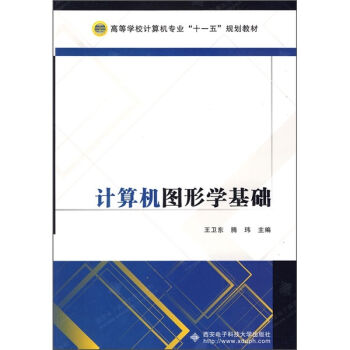
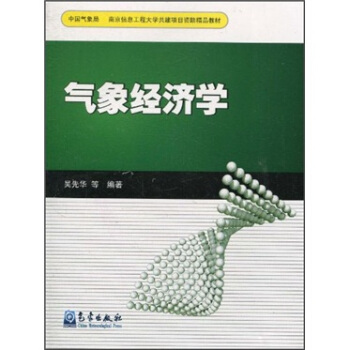

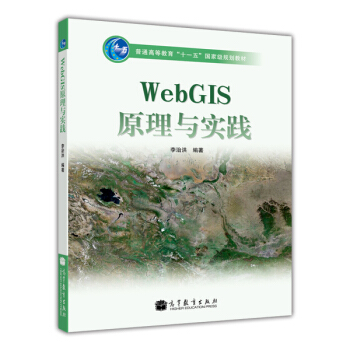
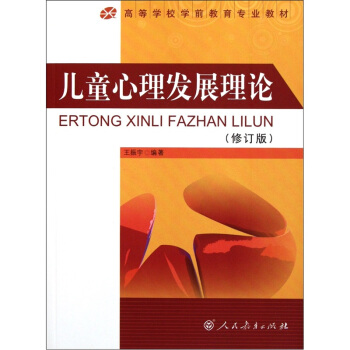

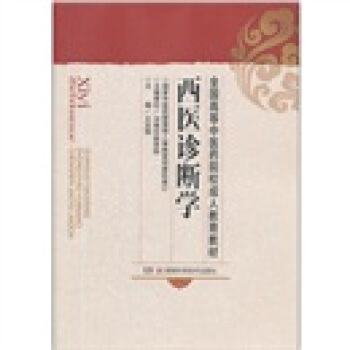
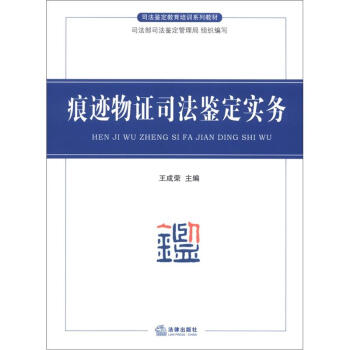

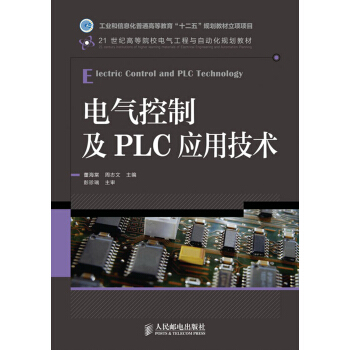


![時代教育國外高校優秀教材精選:材料力學(英文版·原書第6版) [Mechanics of Materials,6e] pdf epub mobi 電子書 下載](https://pic.tinynews.org/11321531/rBEhWVJogrIIAAAAAAEJtQEbkbQAAEgoQBZ670AAQnN370.jpg)

![食品生物工藝專業改革創新教材係列:烘焙專業英語 [English for Baking] pdf epub mobi 電子書 下載](https://pic.tinynews.org/11495867/53e9e7f9N9420e263.jpg)

